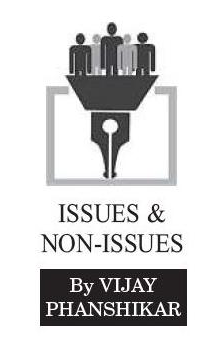Of Agri-Culture! - VIII
| Date :08-Jan-2022 |

“The root cause of Indian agricultural crisis lies in economics. I am a technologist. Technology and public policy are both very important. But ultimately, while technology is important for farmers, more important are procurement and public distribution. So, unless the occupation is economically viable and ecologically sustainable, it will not sustain.”
- The legendary agricultural scientist Dr. M.S. Swaminathan, in an interview
THIS assertion has a tremendous value as it comes from the legendary Dr. M.S. Swaminathan, the Father of Green Revolution. In later years, he started talking about ‘Evergreen Re volution’, in the sense he started stressing the need for not just economically viable agriculture but also an ecologically sustainable one. That really formed a critical input in our thinking on agriculture -- particularly after people started realising that bombarding our farms with chemical fertilisers and pesticides along would not make agriculture sustainable.
Of course, it must be stated that in the voluminous report of Farmers’ Commission -- of which Dr. Swaminathan was chairman -- all the concepts pertaining to sustainable agriculture have been appropriately discussed -- coupled with appropriate recommendations and possible solutions. That report came more than ten years ago.Yet, the country has not been able to register good progress on the farm front, and countless lakhs of farmers have already committed suicide -- as if killing self is a regular affair with the farmers, as if it is the only natural outcome of the terrible conditions available in the agricultural sector.
What is important for our discourse at this stage is the word ‘sustainable’. It has many dimensions and we must discuss all those in a threadbare manner -- so as to come out with a reasonable response to the agrarian crisis now at hand.
India’s farm sector has been suffering from a terrible invasion of commerce for at least a quarter of a century, to say the least. What everybody was led to believe was the concept of high yield. So, an entire agro-based chemistry came up as a response. That led to fast-growing, high-yielding crops that did feed the people’s stomachs, all right. With passage of time came the greater demand for greater yields. And to meet this demand came bigger dosage of chemical-based fertilisers and pesticides. That did create bigger yields all right. But in the process, that started sapping Mother Earth of its vitality, in an unprecedented manner, eventually leading to lower yields.
As if this invasion of commerce was not enough, another wave of undesirable aggression came -- in the form of modified -- and even terminator -- seeds. Everybody saw this coming, but none had the courage to stop it. The plunder, thus, continued, eventually leading to weakening agriculture as a strong sector of the national economy -- also leading to men like Dr. Swaminathan to start talking about sustainability as a critical factor. For, even as the farmers saw bigger yields, they also started realising how the overall agricultural productivity was getting lower and lower.
There was yet another hidden danger whose presence nobody realised. It pertained to farm yields with lesser nutritional qualities. The food started losing its traditional taste as well as nutritional strength. Most unfortunately, this aspect of the concept of sustainability was noticed only rarely.
There also was yet another rather hidden aspect of this danger -- of increasing vulnerability of consumers of such a produce from the farms. More and more people started becoming vulnerable to disease and illness because the food they ate did not have the appropriate nutritional value, thanks to the chemical and biologically-modified aggression on agriculture -- triggered by commercial interests.
The farmer suffered. The nation suffered, too. and here we are at a stage trying to figure out how we rectify things in the farm sector.
And again, most unfortunately, many of our thoughts are still hovering over the economic viability of farming as a sector. We are failing to understand that the farmers’ children are not turning away from farming not just because of the economic factor, but also because of the cultural factor. That is so because we, as a nation and society, have paid little heed to the issue with a strong cultural dimension.
And one of the biggest culprits is politics -- in the sense the stress of the political community on wrong brand of development. Just take a look at so-called developmental advertisements by the political parties -- focusing on malls and factories and highways and airports and high-rise buildings and swanky school and college premises, ultra-modern hospitals ...! And all this passes for New India. This bombardment of developmental pictures is so city-based, so urban in its appeal!
Where is the village in all this? Where is agriculture in all this? Where is the young rural lad feeling happy that he gets his due chance of personal progress and growth right in his own village?
These questions do not cease to come up here. Much to the contrary, they come up with bitter vengeance: Why did we not give a simple thought to the terrible cultural gap we are creating between villages and cities? All our political and developmental promotion has in its focus only the city-based projects -- which cannot find sustenance in villages. Why is this happening? Why aren’t we waking up to the terrible reality of our own making as regards our villages and our farms and our farmers and our youths in villages?
The idea in raising these questions is never to suggest that our village youths should never traverse to cities for personal growth; the idea is to ask why we are trying to leave our villages bereft of actual opportunity of growth for the youth there!